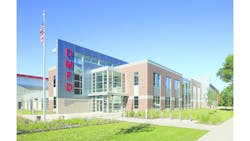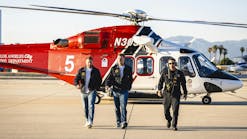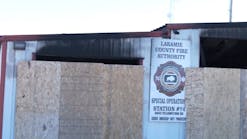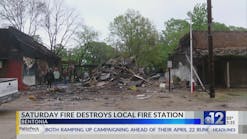The recent upturn in the economy provides many fire departments an opportunity to revisit plans to build or renovate fire stations. Unfortunately, the significant increase in prices since the recent recession is a surprise to some fire chiefs. "Comparing costs and quotes from three or four years ago will be a shock," offered one East Coast architect. Construction costs are also on the rise after lower prices during the recession.
Based on conversations with fire chiefs and officers, facility managers, architects and participants in the 2014 Station Design Conference, we offer the top 10 trends–in no particular order–we foresee in 2015:
1. Performance-Based Design – Performance-based design is a data driven design approach to optimize a building's performance based on predicted usage and allowing for better decision making from the onset of the design process.
Given limited dollars available for a capital improvement project, this design approach allows for clear decision making, based on a full understanding of long-term cost trade-offs being made. Using a fully integrated design approach, design decisions from building orientation, glazing, materiality and necessary functionality are tested and analyzed based on computer modeling instead of adjectives such as a client’s desire to have a durable, low-maintenance, energy-efficient facility. What was thoughtful merely 10 years ago, does not even meet minimal code today since no data-driven performance objectives were established.
Pushing this one step further, more projects are putting money behind the promise of design efficiencies and requiring mandated accountability of operations expected efficiencies. Stretching this out over a 50-plus fire station life span, there is flexibly for a facility to grow and change over time since technology is not static, programmatic demands for facilities will change during their life span and the need for adaptability is a given.
2. Fire sprinklers in fire stations – Fire departments need to support residential fire sprinklers and install fire sprinklers in fire stations and public safety facilities. January 2015 started with two fire station fires in Westlake, Texas and in Hartsfield, Nova Scotia. Annually, over a hundred fire stations have a fire. This is not only embarrassing for the fire department, but also it creates a considerable hardship on the fire department and the community it serves. There has been a significant increase in the number of fire departments installing sprinklers in new and renovated facilities submitted to station award programs.
Fire sprinklers belong in all new construction and renovations. It is important to set an example and for good reason.
3. Health and safety – The increasing number of firefighters with cancer and job-related health issues demands attention to restricting firefighters' exposure to carcinogens on the job and in fire stations. Consider the storage of turnout gear and equipment in a ventilated room away from administrative and living areas. Provide separate laundry areas for turnout gear versus laundry equipment for station wear and separate HVAC systems for apparatus bays and living areas.
Research how to contain blood borne pathogens to designated areas by creating decontamination areas, specified wash-up areas, showers, touchless lavatories, use of mattress liners, limit carpeted areas and anti-bacterial furniture that can be cleaned.
4. EMS areas – Increasing demands for emergency medical services have a number of new fire stations providing a separate triage room for public access. Rising healthcare costs, the changes to Obamacare, and advancing trends in community paramedicine are causing fire departments to evaluate how to most effectively meet the healthcare needs in the community. A designated triage facility or walk-in assessment area is a reality in many fire departments today.
5. Security – Fire department personnel are not exempt from danger in the station, whether there is a threat outside or inside of the building, security systems should be considered. There should be secured and lighted parking to reduce vandalism to employees' vehicles. Restricting public access to the station and living quarters with secure doors improves the safety of personnel. Use of 6-button combination locks, magnetic card-lock locks on all exterior and some interior doors (with push-button combination override) is also recommended. One chief prefers magnetic card-locks to proximity card locks because of a higher level of security (RDF is easy to intercept). Biometrics are also becoming an affordable option.
6. Diversity in stations – Debates continue on sleeping areas (individual with doors or without, shared rooms or open dorms) as well as bathrooms in fire stations, but the trend is leaning toward individual sleeping areas (with doors) and separate, gender-neutral bathrooms, particularly in satellite and volunteer stations.
7. Training/Community rooms – Increasingly, fire departments are designing classroom-style training rooms that can also be used by the community. The community can gain entry to these rooms, with limited access to other areas of the fire station.
8. Floor space in fitness rooms – An emphasis on core-strength exercises, which focus on the mid-section, core exercises are increasing in popularity. Fire departments can accommodate this workout by designing fitness rooms that include additional open floor space for floor mats.
9. Sustainability – While Leadership in Energy & Environmental Design (LEED) certification may not be affordable for most fire departments, many of the requirements promote an increased focus on sustainability and the environment issues. Among popular trends is to orient a station for daylight, passive heating and cooling; increased natural lighting in one-story hallways with "tube" windows; harvest rainwater for truck washing; motion sensors; and solar power.
10. Disaster planning/storage areas – Identify locations for housekeeping supplies, EMS supplies, linens and training supplies. In those same locations, consider pre-planning storage for natural or man-made disasters including water, pre-packaged food, cots, etc.
One more "trend" worth mentioning:
Educate your community – Repeatedly chiefs and officers recognize too late that the community is not aware of the changing scope of the fire department's responsibilities. If you are even thinking about building or renovating your fire station, begin now to educate your community and local leaders about how you serve the community.
As one fire chief explained, "We started work on the bond levy several years before most people knew there would be a bond levy election. We spent several years educating community members about fire stations so when it really came time to start talking about running a bond levy, it was a number of people from throughout our community who were telling others that a new fire station was needed...it wasn't just the fire department saying a new fire station was needed. Working to educate the community well in advance of discussion about a bond levy resulted in great returns. Then, once you have a new facility – don't forget them. Keep them informed and keep them involved.
A little marketing or public relations outreach could make your future plans easier.
- View Gallery: Highlights from the 2014 Station Design Awards
JANET WILMOTH grew up in a family of firefighters in a suburb of Chicago. Wilmoth, owner of Wilmoth Associates, worked with Fire Chief magazine for 27 years until it closed in 2013. She is currently a Project Director for Firehouse. Wilmoth currently serves on the Board of Directors for the Fire Emergency Manufacturers & Services Association and lives in Lisle, IL.






